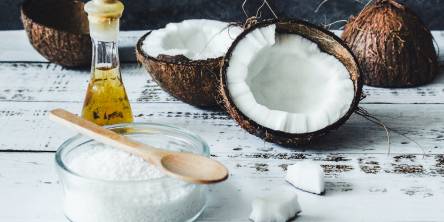Best Ayurvedic Detox Diet for Natural Body Cleansing & Weight Loss

Abstract
An Ayurvedic detox diet is a holistic approach to cleansing the body, mind, and soul. Rooted in ancient wisdom, this dietary plan focuses on eliminating ama (toxins) through specific foods, herbs, and lifestyle modifications. This article explores the principles of an Ayurvedic detox diet, what foods to consume and avoid, and essential lifestyle changes to support the detoxification process.
Introduction
In today’s fast-paced world, our bodies accumulate toxins from processed foods, pollution, and stress. Ayurveda, the traditional Indian system of medicine, offers a natural way to cleanse and restore balance through a detox diet. Unlike fad diets, an Ayurvedic detox diet is personalized based on one’s dosha (body constitution) and aims to enhance digestion, boost immunity, and promote overall well-being.
Types of Ahara (Diet) in Ayurveda
According to Acharya Sushruta, diet is classified into three types
- Ekanta Hitakara (Always Beneficial) – Foods that suit everyone, like water, ghee, milk, and rice.
- Ekanta Ahitakara (Always Harmful) – Harmful Substances, such as poison and fire.
- Hitahitakara (Conditionally Beneficial or Harmful) – Foods that depend on a person’s prakriti (body type). For example, sesame oil is good for Vata but may worsen Pitta.
Impact of Diet on Prakriti (Body Constitution)
Ayurveda says food affects people differently based on their Prakriti (body type). Eating according to Prakriti promotes health and prevents disease. The Bhagavad Gita also classifies food based on its impact on the mind and body:
- Sattvika Ahara (Pure & Wholesome) – Boosts immunity, digestion, and mental clarity. Examples: fresh milk, fruits, jaggery, freshly cooked food.
- Rajasika Ahara (Stimulating & Energizing) – Increases ambition but may cause restlessness. Examples: spicy food, meat, pickles, garlic, processed food.
- Tamasika Ahara (Dull & Heavy) – Causes laziness and imbalance if overconsumed. Examples: stale food, alcohol, frozen food, excess tea/coffee.
For good health, eat as per prakriti (body constitution) and balance the six rasa (tastes) in meals.
1. Significance of Ahara (Food) in Ayurveda
Ahara (food) is essential for life, health, and well-being. Ayurveda considers food as the Maha Bhaisajya (greatest medicine), as it nourishes the body, boosts ojas (immunity), and supports growth, intelligence, and vitality. The effect of food depends on its rasa (taste), guna (qualities), virya (potency), and vipaka (digestion process), which influence the balance of doshas (vata, pitta, kapha). A person who eats a balanced, healthy diet can live a long, disease-free life.
2. Optimal Food Quantity in Ayurveda
Ayurveda says the right amount of food depends on a person's agnibala (digestive power), desh (place), prakriti (body type), and vaya (age).
According to Acharya Charaka, the Kukshi (stomach) should be divided into three parts:
- One-third for solid food
- One-third for liquids
- One-third should remain empty for proper movement of Doshas (Vata, Pitta, Kapha) and digestion.
Understanding the Ayurvedic Detox Diet
Ayurveda believes that ama (toxins) accumulate in the body due to poor digestion, unhealthy eating habits, and environmental factors. A detox diet focuses on reducing ama (toxin) by supporting agni (digestive fire) and encouraging the body’s natural ability to cleanse itself. The key principles of an Ayurvedic detox diet include:
- Eating seasonally and according to one’s dosha.
- Consuming easily digestible, whole foods.
- Drinking herbal teas and detoxifying beverages.
- Following mindful eating practices.
- Incorporating yoga, pranayama (breathing exercises), and meditation.
Foods to Eat During an Ayurvedic Detox Diet
A successful Ayurvedic detox diet includes sattvic (pure, energy-enhancing) foods that are light, nourishing, and easy to digest. Some of the best foods to consume include:
1. Warm, Cooked Foods
- Khichdi (a mix of rice and lentils) with mild spices
- Cooked vegetables like pumpkin, bottle gourd, and carrots
- Light soups and broths
2. Detoxifying Herbs and Spices
- Turmeric (anti-inflammatory and detoxifying)
- Ginger (improves digestion and removes toxins)
- Cumin, coriander, and fennel (support digestion)
- Triphala (an herbal blend that aids bowel cleansing)
3. Hydrating Beverages
- Warm water with lemon to flush out toxins
- Herbal teas such as ginger tea, tulsi tea, and fennel tea
- Cumin-coriander-fennel (CCF) tea for digestion
4. Fresh Fruits and Nuts
- Seasonal fruits like apples, pears, and pomegranates
- Soaked almonds and walnuts for energy
Foods to Avoid During Detox
Certain foods contribute to toxin buildup and should be strictly avoided during detoxification. These include
1. Processed and Junk Foods
- Fried foods, packaged snacks, and sugary treats
- Artificially flavored and preserved foods
2. Heavy, Hard-to-Digest Foods
- Red meat and excessive dairy products
- Cold and raw foods (as they weaken digestion)
3. Stimulants and Addictive Substances
- Caffeine and alcohol
- Excessive salt and refined sugar
Lifestyle Changes to Support Detoxification
An Ayurvedic detox is not just about diet; it requires a holistic lifestyle approach. The following lifestyle changes can enhance the detox process:
1. Establish a Daily Routine (Dinacharya)
- Wake up early (before sunrise) and drink warm water.
- Practice oil pulling to remove toxins from the mouth.
- Follow a regular sleep schedule.
2. Engage in Gentle Exercise
- Practice yoga poses that aid detoxification (twists, forward bends, and pranayama).
- Go for a daily walk in nature.
3. Self-Care Practices
- Do abhyanga (massage) with warm sesame oil.
- Take warm baths with Epsom salt to promote relaxation.
4. Stress Management
- Practice meditation and mindfulness to reduce stress.
- Avoid excessive screen time and digital distractions.
Conclusion
An Ayurvedic detox diet is a natural way to cleanse the body, enhance digestion, and improve overall health. By choosing nourishing foods, avoiding toxins, and embracing holistic lifestyle changes, one can achieve balance and rejuvenation. Whether done seasonally or as a regular practice, an Ayurvedic detox can be a transformative journey toward a healthier life. Start your detox today and experience the profound Benefits of Ayurveda.
Similar Articles
Winter brings cosy mornings and festive vibes, but it also makes the body more vulnerable to several health problems.
Fatigue has become one of the most common yet ignored health concerns. Whether it is due to hectic work schedules, stress, nutritional deficiencies, or chronic health issues, persistent tiredness can weaken the immune system and leave the body vulnerable to infections.
Healthy eating is often portrayed as complicated or expensive, but in reality, it’s about balance, awareness, and consistency. Whether you’re juggling a busy schedule, trying to lose weight, or simply aiming for better health, adopting practical eating habits can transform your life.
In today’s rapidly evolving world, telemedicine and virtual health have revolutionized the way healthcare is delivered.
A healthy gut is the foundation of overall wellness, and one nutrient plays a crucial role in maintaining its balance—fiber
Eating a healthy diet usually starts with adding more fruits and vegetables to your plate, but superfood greens take it a step further.
Nowadays, not every people take a notice of the fact that they are putting on weight and losing their frame. In fact, excessive fat is considered as one of the well-known catalysts of putting their bodies at risk and making them cope with a variety of physical as well as health problems.
Coconut oil, which used to be known as a cooking ingredient now becomes so popular for its health benefits that it is placed on the top of superfood list. It has the largest consumption and production in tropical countries such as Thailand, Philippines, India, etc.
Due to their many health benefits, organic fruits and vegetables are becoming increasingly popular in today's health-conscious culture. Natural farming techniques that prioritize soil health









